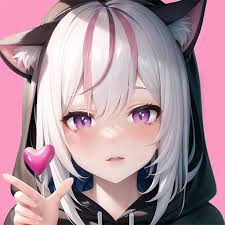In today's fast-paced digital era, the realm of character animation has witnessed transformative changes, thanks to advanced technologies. These innovations are not just reshaping how animated characters are created but also enhancing how they interact with audiences in real-time environments like gaming and virtual reality.
Real-Time Rendering Engines
The backbone of modern character animation lies in the use of real-time rendering engines such as Unreal Engine and Unity. These platforms are equipped with powerful tools that allow animators to create detailed environments and realistic characters. For example, Unreal Engine utilizes its Twinmotion feature to provide high-quality interactive scenes that can be modified on the fly, which is crucial for video game development and VR applications.
Motion Capture Technology
Motion capture (mocap) technology stands out as a pivotal element in animating characters. This technique involves recording the movements of a human actor and translating them into the digital model of an animated character. High-end mocap systems, such as those developed by Vicon, offer precision down to a few millimeters, capturing intricate details like facial expressions and finger movements. This technology not only speeds up the animation process but also delivers animations that are exceptionally lifelike and responsive to the nuances of human emotion.
Machine Learning Algorithms
Machine learning algorithms play a critical role in refining the animation process. These algorithms analyze thousands of hours of video to learn how human muscles move and how different emotions are expressed through facial gestures. By incorporating this data, AI can automate parts of the animation process, such as lip-syncing and eye movements, reducing the time and effort required from human animators.
Facial Recognition and AI-driven Simulation
Facial recognition technology combined with AI-driven simulation is revolutionizing character animation. Software like FaceRig enables users to animate characters in real-time using just a webcam. The software uses AI to interpret the user’s facial expressions and instantly animate the character accordingly, making it a favorite tool for streamers and content creators.

Neural Networks and Generative Models
Neural networks have the ability to generate new content based on learned data. Generative adversarial networks (GANs) are particularly noteworthy. They use two neural networks—a generator and a discriminator—to produce new images and animations that are incredibly realistic. This method is being used to create dynamic facial expressions and movements that can be adapted for various animated characters, enhancing the realism and dynamism of the animation.
Integration in Modern Media
The integration of these technologies finds its way into modern media, influencing not just traditional entertainment mediums like films and television but also emerging platforms such as virtual influencers and interactive digital installations. These AI-driven characters can interact with humans in real-time, learning from user interactions to become even more engaging over time.
Ethical and Creative Considerations
As we embrace these advanced technologies, the ethical and creative implications also come to the forefront. Animators and developers must navigate issues of authenticity, privacy, and the potential reduction in human employment in the animation industry. However, the positive side offers unprecedented opportunities for creativity and personalization in character animation.
In a surprising twist on traditional applications, AI-driven animation technology is also making waves in less conventional areas, such as adult entertainment. The use of character ai hentai exemplifies how these technologies can cater to a niche yet significant market by creating highly customized and interactive experiences.
The convergence of these technologies ensures that the future of character animation is not only vibrant and varied but also more accessible to creators across different sectors. The era of static, one-dimensional characters is being replaced by a new generation of dynamic, intelligent, and emotionally resonant virtual beings that continue to push the boundaries of what is possible in animation and beyond.